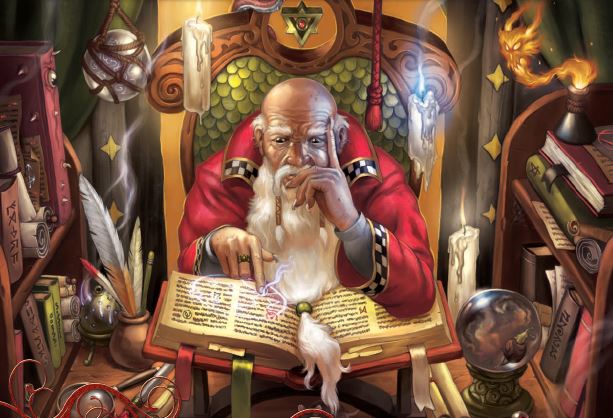
Chapter 2 of Game Master’s Guide details the types of adventures and campaigns you can play, what adventures and campaigns look like in the greater scope of a game, and how to craft your own adventures and campaigns for a rewarding tabletop experience.
The following is an early sample of that chapter. The book is still being developed, so this text is not final. But it is very close. . . .
The Kickstarter for the Game Master’s Guide is going strong! Find out more!
Building Campaigns
For many GMs, even experienced ones, the concept of building a long-term campaign can seem daunting. However, it’s often helpful to break it down into smaller parts when conceptualizing it. Players can—and often do—make drastic choices in-game that dramatically shift the direction of the story. And if you’ve spent a lot of time planning every detail of your home-brew game out to 20th level, this can leave you scrambling (and possibly left with wasted plans and energy).
To make planning a campaign easier and to help you roll with the punches that the players inevitably throw your way, it can be helpful to establish a few of the overarching concepts and details early and to craft smaller adventures and story arcs that build as you go.
The two main elements to focus on when developing the bones for your campaign are metaplot and long-term antagonists and allies.
Metaplot. As stated earlier, a metaplot is often core to a campaign. A metaplot is a through-line that links adventures together and makes them feel like a more cohesive story. While a campaign doesn’t need a metaplot, its presence will help both you and your players to maintain a focus, a motivation. A metaplot could be a long-term threat the characters must work against until they’re powerful enough to take them down once and for all (such as a lich working from within to undermine the stability of the kingdom while also building armies of the dead for a full assault), a less obvious story that becomes more clear as the characters progress (such as a patron hiring the characters to recover ancient artifacts and eventually revealing their true intentions), or a primary goal presented to—or by—the characters at the start of the campaign (such as finding their way back through the Labyrinth to their home plane of existence).
Long-Term Antagonists and Allies. Another element of campaigns that spans multiple adventure arcs is the concept of long-term antagonists and allies. These NPCs will help form a foundation for your campaign, acting as touchstones for your players. Knowing the wise old wizard or the advisor to the queen are there to provide direction and guidance can help your players—and their characters—find direction when they’re feeling lost, and having an ultimate villain always lurking in the background, perhaps popping up at inopportune moments, can translate into clear goals and motivations. And having a reliable ally suddenly go missing at a key moment can emotionally engage the characters. (Though if you are going to pull the rug out from under your players, make sure the moment is earned, for if not done carefully, it can make players feel like nothing they have done until this moment has mattered. Twists are extremely effective if done well but can feel cheap and demoralizing if not handled properly.)
Themes and Setting
The kind of metaplot you build for your campaign will often hinge on your setting and the themes of the story that you and your players want to tell. For instance, a dark gothic campaign set in an isolated village will handle themes of loss and betrayal much differently than a high fantasy campaign set in a bustling, high-magic metropolis.
A theme can inform a setting, and vice versa. Many GMs find it easier to choose (or build) a setting and then develop the themes for the campaign once that is established, but don’t be afraid to decide the theme(s) and tone you and your players wish to explore and then choose a setting to fit the type of story you want to tell. Like a lot of GMing, it all comes down to your personal preference and what works best for you.
Once you’ve established your theme(s) and setting, it becomes easier to craft quests and adventure arcs that interlock, forming a cohesive narrative. If the primary theme for your campaign is freedom, for instance, many of your smaller adventures and quests should deal, at least in some part, with this concept. Don’t get too carried away with making sure each and every element of your campaign is on-theme, however, or you’ll burn yourself and your players out trying to fit into too small a box…
